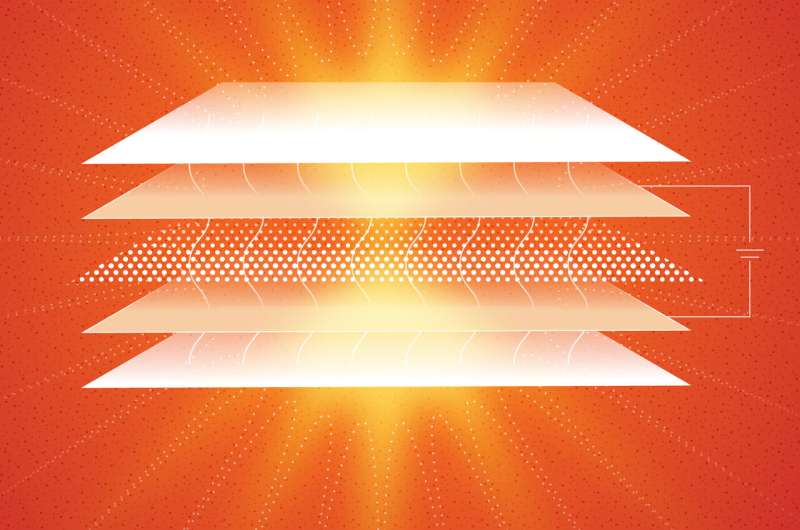Physicists score double hit in LED research

In two breakthroughs in the realm of photonics, City College of New York graduate researchers are reporting the successful demonstration of an LED (light-emitting diode) based on half-light half-matter quasiparticles in atomically thin materials. This is also the first successful test of an electrically driven light emitter using atomically thin semiconductors embedded in a light trapping structure (optical cavity).
The research is led by graduate physics student Jie Gu and post-doctoral fellow Biswanath Chakraborty, in collaboration with another graduate student, Mandeep Khatoniyar.
According to Vinod Menon, chair of physics in City College's Division of Science and the research team's mentor, their double feat, reported in the journal Nature Nanotechnology, marks an important milestone in the field of 2-D materials and, more broadly, LEDs.
While such LEDs have been realized in other materials at low temperatures, this device operates at room temperature and is fabricated using the now well known "scotch tape" based technique.
"The fact that this device is fabricated using stacks of atomically thin materials and operates at room temperature makes it an important first step towards a technologically relevant device demonstration," noted Menon, adding: "One potential application of such hybrid LEDs is the speed of operation—which can translate to using them for LED based communication systems including LiFi."
LiFi is a wireless optical networking technology that uses LEDs for data transmission. Benefits of LiFi include higher speeds than Wi-Fi.
The device was fabricated at the CCNY-based CUNY Advanced Science Research Center's nanofabrication facility and tested in Menon's lab. In follow- up research, the CCNY team is attempting to realize quantum emitters (single photon emitters) using similar architecture.
More information: Jie Gu et al, A room-temperature polariton light-emitting diode based on monolayer WS2, Nature Nanotechnology (2019). DOI: 10.1038/s41565-019-0543-6
Journal information: Nature Nanotechnology
Provided by City College of New York





















